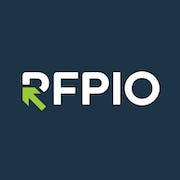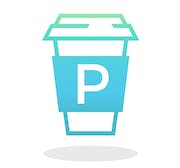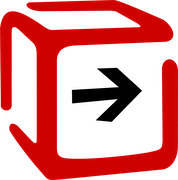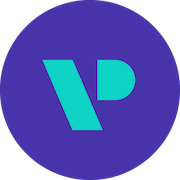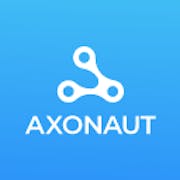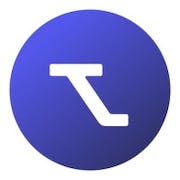Looking for the best RFP software to streamline your procurement process? Our comprehensive buyer's guide offers expert tips to help you identify the right choice.
Are you tired of the inefficiencies and frustrations that come with manually managing your organization's lengthy RFP process? Look no further than an RFP software solution that can streamline your workflow, increase collaboration, and improve overall productivity. The benefits of this tool are numerous - from simplified vendor management to customizable templates and automated scoring - all of which can lead to substantial time and cost savings. But with a wide range of options on the market, how can you know which solution will best fit your organization's needs? In this buyer's guide, we will take a deep dive into the world of RFP technology and help you make a wise decision that will take your business to the next level.
What is (RFP) request for proposal software?
This is a tool that simplifies the task of creating, issuing, and tracking proposal requests to potential vendors or suppliers. It makes the process easier, faster, and more accurate than traditional methods. It also automates various stages of the process, such as document sharing, vendor communication, bid evaluation, and proposal tracking. It significantly reduces the time and effort required to prepare and manage RFPs, enabling teams to focus on other important aspects of their work.
Below are some of its common use cases:
- Procurement: RFP software is widely used by procurement teams to create, manage, and evaluate RFPs for different goods and services.
- Vendor management: It makes the monitoring and management of vendor performance easy, by automating the process of collecting and analyzing vendor data.
- Sales: With RFP technology sales teams can use it to prepare and submit high quality proposals in response to customer RFPs.
- Sourcing: It streamlines the sourcing process by allowing teams to search for new suppliers, evaluate their performance and capabilities, and establish preferred supplier lists.
It's commonly used by various types of companies to streamline their procurement tasks, including:
- Government agencies: Federal, state, and local government offices use it to simplify the procurement process and ensure compliance with regulations.
- Large enterprises: Organizations with complex procurement processes and multiple stakeholders can benefit from streamlining the RFP process.
- Small and medium-sized businesses (SMBs): RFP software enables SMBs to adopt a more professional and competitive approach to their procurement tasks without sacrificing resources, time, or manpower.
Top benefits of having a request for proposal solution
There has never been a greater need for efficient and effective project management. Indeed, with a wide variety of different tasks and projects to juggle, it's crucial for businesses to ensure they are utilizing the right tools and technologies to streamline their work. One such tool that can make a huge difference is this RFP program, and here are some of its main benefits to keep in mind:
- Improved efficiency: With proposal automation software, business processes such as project management tasks, including creating and sending proposals, tracking deadlines, and managing vendors can be automated. This automation can lead to significant time and cost savings across the board.
- Better collaboration: The system makes it easy for teams to collaborate and track progress on proposals and projects. With the ability to assign tasks and deadlines, team members can work together more effectively and ensure nothing falls through the cracks.
- Streamlined workflows: By providing a centralized platform for proposal management, RFP software eliminates the need for manual data entry and minimizes the risk of errors or duplications. This can help businesses to standardize their workflows and ensure that all proposals and projects follow the same process.
- Enhanced reporting: With robust reporting and analytics features, it can also help businesses to track key metrics and improve their proposal performance over time. By identifying areas of strength and weakness, companies can refine their processes and improve their success rates.
- Increased security: An RFP tool typically provides advanced security features, including access controls and encryption, to ensure that sensitive business data is protected from unauthorized access or theft.
10 key features of request for proposal software
This platform is rapidly transforming the way businesses approach the procurement process by streamlining the process of creating, issuing and responding to requests for proposals. Here are 10 of its common features:
1. Customizable templates: RFP technology allows businesses to create customizable templates to meet their specific needs. This helps to speed up the RFP process and ensures accuracy.
2. Collaborative workflows: It streamlines the workflow process by enabling team members to collaborate and work together in real-time, from anywhere in the world.
3. Automated proposal evaluations: This tool automates the process of evaluating proposals, saving businesses time and money. Research has shown that companies lose an average of $725,000 in annual revenue due to poorly drafted RFPs.
4. Advanced search and filtering: An RFP system makes it easy to search and filter proposals, making it easy to quickly find the right proposal for the job.
5. Enhanced security: A request for proposal solution provides enhanced security features that protect sensitive information, reducing the risk of data breaches.
6. Integration with other tools: It can be integrated with other business tools such as (customer relationship management) CRM systems and accounting software, increasing efficiency and improving workflows.
7. Real-time notifications: It also provides real-time notifications to keep all team members informed of changes and updates to the RFP process.
8. Multi-platform accessibility: An RFP program is accessible across multiple platforms, including desktop, mobile, and tablet devices, making it easy to collaborate from anywhere, at any time.
9. Analytics and reporting: It provides analytics and reporting tools that allow businesses to track and measure the success of their RFP process.
10. Automated reminders: RFP technology provides automated reminders to keep team members on track and ensure that deadlines are met.
What to consider when purchasing a request for proposal platform?
This application is designed to assist businesses in streamlining their procurement process, from initial proposal to final selection. It automates the process of creating RFPs and evaluating vendor proposals, making it easier for businesses to manage and track submissions. However, not all software is created equal, and it is crucial for businesses to know what factors to consider when selecting the right one. Below are some key considerations to keep in mind:
1. User-friendliness: A user-friendly interface is crucial when it comes to RFP software. The system should be intuitive and easy to use for both your team and your vendors. This will ensure a smoother procurement process for all parties involved.
2. Customizable templates: The solution should allow businesses to create and customize their RFP templates to meet their specific project requirements. This will save time during the proposal creation process and ensure consistency across different RFPs.
3. Collaboration: Look for one that allows your team to collaborate on the RFP creation and evaluation process. This can include features like assigning tasks, sharing files, and real-time communication. Collaboration tools can speed up the procurement process and lead to more informed decision-making.
4. Integration: Consider whether the app integrates with other software applications your business uses, such as your CRM, ERP, or project management tools. Integration can ensure a smoother workflow and reduce data entry errors.
5. Security: Security is also paramount for this program. Your RFP submissions contain sensitive information, so ensure the one you select is secure and compliant with data protection laws.
6. Reporting and analytics: Look for an application that provides reporting and analytics features. This can help businesses track the progress of their procurement process, identify areas for improvement, and make data-driven decisions.
7. Training and support: Lastly, ensure that the platform comes with training and support resources to help your team make the most of the system's features. This will reduce the learning curve and ensure your team can use it effectively.
Emerging trends for RFP software
As businesses continue to navigate the ever-changing landscape of technology, the way they approach the request for proposal process is also evolving. This year, there are several notable trends emerging in this industry that are worth keeping an eye on.
1. Artificial Intelligence (AI) and Machine Learning (ML) - The use of AI and ML in the RFP process will allow for more efficient and accurate responses. From analyzing the RFP requirements to generating proposals, AI and ML can streamline the entire process.
2. Cloud-based solutions - The demand for cloud-based RFP software is growing, as businesses look for more flexibility in the way they manage their RFP process. With cloud-based solutions, RFP documents can be accessed from anywhere and at any time, making it easier for proposal teams to collaborate and work together.
3. Integration with other tools - In 2024 and beyond, RFP software will continue to integrate with other tools such as CRM and project management platforms, to provide a more seamless and connected user experience. This will allow businesses to make more informed decisions based on the data gathered from different platforms.
4. Collaboration features - Collaboration features such as real-time commenting and feedback will become more prevalent, allowing teams to work together more efficiently and effectively.
5. Advanced analytics - RFP technology will continue to evolve with better analytics capabilities, which allows businesses to gain deeper insights into their RFP process and improve their overall response rate.
Conclusion
As the RFP process continues to grow in importance, the use of technology to support it will also continue to evolve. Businesses must keep up with the latest trends in this field to stay ahead of the curve and ensure their RFP response process is as efficient and effective as possible. In fact, as many as 57% of proposal managers say one of their main aims is to improve their proposal management in their company over time. Research and evaluate different package options to meet your business goals, and use RFP software to deliver the best value to your clients.

